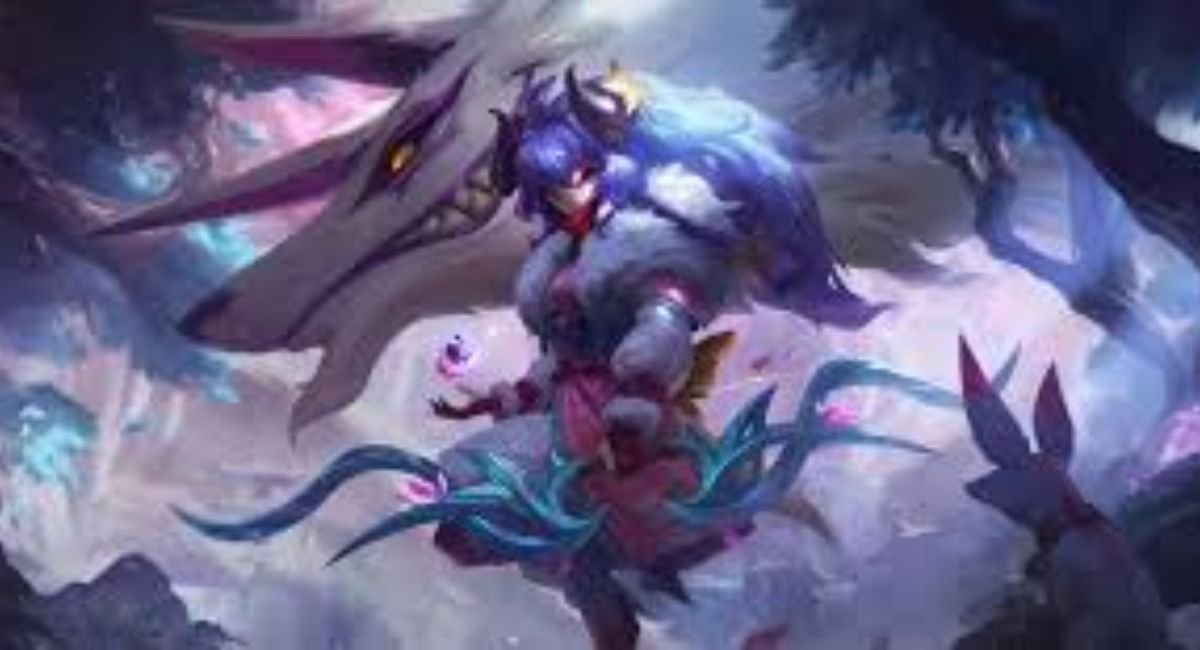Kindred Red or Blue TFT: Which Build is Best for Your Team?

Introduction to Kindred Red or Blue TFT
Kindred Red or Blue TFT has taken the gaming world by storm, captivating players with its unique blend of strategy and chance. As you dive into this auto-battler universe, you’ll encounter a plethora of champions to assemble your dream team. Among these heroes, Kindred stands out for their intriguing duality and versatility on the board.
But here’s the burning question: Which build should you focus on—Kindred Red or Blue? Each brings distinct advantages and drawbacks that can significantly influence the outcome of your games. Whether you’re aiming for a top-tier finish in ranked play or just having fun with friends, understanding these builds can elevate your gameplay. Let’s explore what makes each variation tick so you can make an informed decision for your next match!
Overview of the Kindred Red or Blue TFT
Kindred is a fascinating unit in Kindred Red or Blue TFT offering players unique strategic options. This champion represents the duality of life and death, manifesting as both Red and Blue forms.
Red Kindred thrives on aggressive playstyles. It deals immense damage to targets, making it ideal for frontline brawlers who can absorb hits while it unleashes its potential. Players often gravitate towards this build when focusing on an offensive strategy.
On the other hand, Blue Kindred emphasizes support and positioning. Its ability to mark enemies allows for tactical advantages over opponents. This variant shines in synergy with backline units that capitalize on mobility and ranged attacks.
Understanding these dynamics is crucial for any player looking to succeed with Kindred in TFT. Each form has its strengths but also requires careful consideration of your overall team composition and strategy.
The Kindred Red or Blue TFT: Pros and Cons
The Kindred Red or Blue TFT focuses on maximizing damage output. Players often opt for this variant to capitalize on burst potential.
One major advantage is the ability to eliminate key targets quickly. With high attack damage, Red Kindred can shred through frontline champions and squishies alike. This versatility makes it a top choice in aggressive compositions.
However, there are pitfalls. Relying solely on damage can leave your team vulnerable. If you don’t have adequate protection, enemy assassins may easily take down your backline.
Additionally, positioning becomes crucial with the Red build. A misstep could lead to disastrous results during critical moments of battle.
It’s essential to weigh these factors when deciding if this approach aligns with your strategy and team composition.
The Kindred Red or Blue TFT: Pros and Cons
The Kindred Red or Blue TFT focuses on maximizing damage output through critical strikes. This version of Kindred excels in late-game scenarios, where it can deal massive amounts of damage to enemy champions.
One significant advantage is its synergy with items that enhance attack speed and crit chance. When equipped with the right gear, Blue Kindred becomes a formidable force. The ability to scale well into the later stages of the game makes it appealing for many players seeking high DPS.
However, this build comes with drawbacks. It often requires more careful positioning due to lower survivability compared to its red counterpart. If caught out of position or focused by enemies, Blue Kindred can quickly be eliminated.
Players must balance aggression and caution when using this build. Timing their attacks and avoiding unnecessary risks are essential for success in battle situations.
How to Choose the Best Build for Your Team
Selecting the best Kindred Red or Blue TFT hinges on your team’s composition and strategy. Start by assessing your existing champions. If you have strong frontline units, a Red Kindred build may enhance damage output effectively.
On the other hand, if your roster thrives on agility and precision, consider Blue Kindred to capitalize on their ability to kite enemies. This choice can provide valuable crowd control against aggressive foes.
Evaluate the opposing teams too. If they lack mobility or rely heavily on burst damage, lean towards Red Kindred for that extra punch.
Don’t forget about itemization! Tailor items based on which build you choose; attack speed boosts work well with Blue while crit-focused gear enhances Red’s potency.
Adaptability is key—stay flexible and ready to pivot depending on how battles unfold during gameplay. Trust your instincts as you refine your approach throughout each match.
Tips for Success with Kindred Red or Blue TFT
To maximize Kindred Red or Blue TFT, positioning is crucial. Place them at the backline, safe from enemy threats. This keeps them alive longer and allows for consistent damage output.
Focus on building items that enhance their strengths. Critical strike modifiers like Infinity Edge can significantly boost their DPS. Combine this with damage amplification items such as Bloodthirster to sustain during fights.
Don’t forget about synergies! Pair Kindred with champions that complement their abilities. Adding units that provide crowd control or additional damage can create a formidable team composition.
Monitor your opponents closely. If they have strong frontline tanks, consider adjusting your strategy by including more burst-damage champions to help eliminate those threats early in battles.
Adapt based on your current game state and available resources. Flexibility in itemization and unit selections often separates winning players from the rest of the pack.
Conclusion
When deciding between Kindred Red or Blue TFT builds, it often comes down to your overall team composition and strategy. Red Kindred shines in dealing damage upfront, making it ideal for aggressive playstyles that prioritize burst potential. On the other hand, Blue Kindred offers more sustainability with its healing capabilities, providing a solid backbone for teams focused on outlasting opponents.
Understanding how each build interacts with different champions and synergies is crucial for maximizing performance. Pay attention to your team’s needs and adapt accordingly. With practice and experimentation, you’ll find the right fit that elevates your gameplay experience while playing as Kindred Red or Blue TFT.





